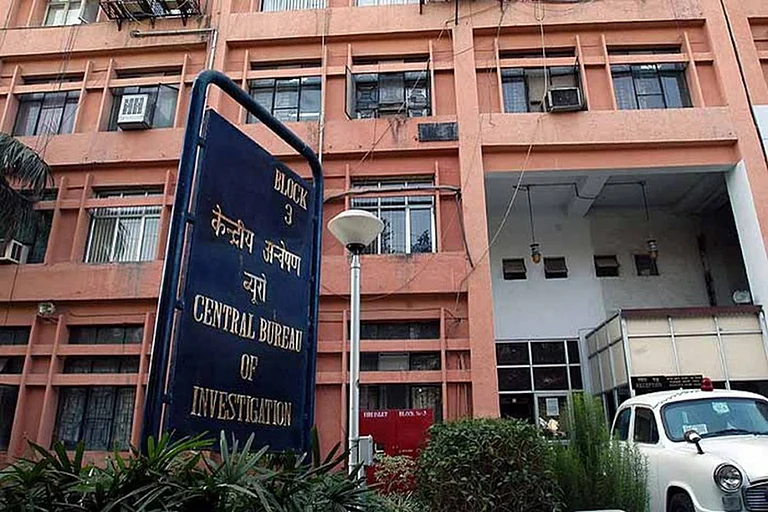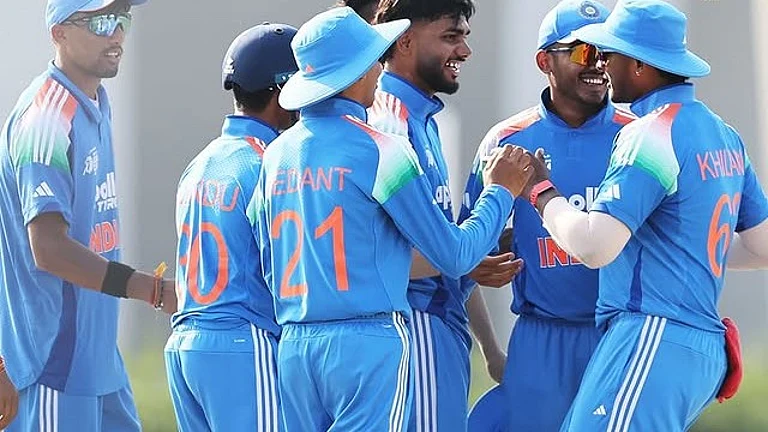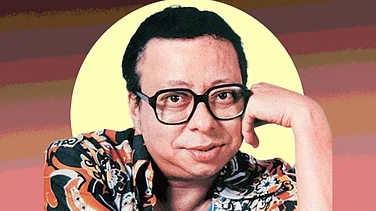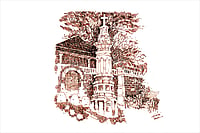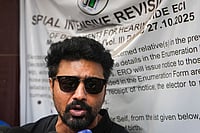There’s a subtle difference between the average Mumbaikar and a taxi driver, plying the roads of the metropolis that never seems to sleep.
According to 58-year-old Mohan Pandurang Bhogle, a former cabbie-turned-location manager for some of the biggest Bollywood movies and ad films, the differentiator is the taxi drivers’ innate curiosity to know and anticipate what lies ahead, after the next bend along the road.
Bhogle knows it well. It was his curiosity and the ability to look beyond the obvious in a city he was born in, that got him his first gig scouting locations for Bombay Blue, a TV series plotted around the Mumbai underworld, that was released in the UK in 1997. “Before Bombay Blue, location managers were not common in the film industry,” he says.
Bhogle credits his taxi-driving days with launching his backend career in Bollywood by accident. Rajguru Swamy, a distant friend, had hired his taxi for a couple of days to scout some locations for a film in the early-1990s. “Rajguru Swamy was my friend and boss. I was a taxi driver then. I learned a lot from him,” he says.
Swamy was impressed by his taxi driver’s knowledge of Mumbai (then Bombay) and its intricate by-lanes. Bhogle showed Swamy sites in the city, which he had never seen before. He immediately hired Bhogle to assist him. In 1995, Bhogle changed professional lanes, switching from a taxi driver to a location scout, helping filmmakers, who approached him through word of mouth, find the right spot for the right shot.
The taxi driver in him had once again helped Bhogle see beyond the bend ahead.
After Swamy retired and migrated to South India, Bhogle stepped into his shoes, with the UK mini-TV series as his first full-fledged gig.
“I knew where old ships were docked for being harvested into scrap. The foreign film crew wanted live locations. They did not want a set. The film plot involved tracking down a drug mafia kingpin in Mumbai. The crew wanted to shoot at Bhendi Bazaar and other such crowded areas, where the mafia don is eventually apprehended,” Bhogle says.
Interestingly, Bhogle’s career in feature films as a location manager, which began with the docks, also ended at a dry shipyard with Rohan Sippy’s 2011 film ‘Dum Maaro Dum’, where he had a minor run-in with Abhishek Bachchan, who plays a surly cop.
During the shoot, which involved some dock workers welding a metal tank, the tank exploded, injuring some of them. “There was some residual oil in the tank, which caused the explosion. I asked the man in-charge, what’s going on? He said, ‘This is usual. It is nothing new’.” Bhogle says.
But Bachchan, who was in the vicinity, was shocked by the explosion’s impact and fell into the shallow sea water. “I said, ‘Sir, that was a narrow miss, otherwise, your ticket upstairs was booked’". He (Bachchan) charged at me and asked, ‘why did you say that?”
The star complained about Bhogle’s barb to Rohan Sippy. “Sippy told him, ‘Mohan jokes around with everyone’.”
Bhogle prefers scouting locations for ad films now because the schedules are more structured, unlike commercial or feature films, which work on tighter budgets. Ad-film makers have bigger budgets and the scale is much larger, particularly when it comes to foreign projects.
Much before he had his share of meeting film stars, Bhogle confessed to his obsession with films when he was young.
An Amitabh Bachchan fan, Bhogle confesses that he uses the actor’s dialogues quite liberally in his conversations.
“Many years ago, I was in an inebriated state. Me and my friends were passing by a police station. I went inside and asked for the station head. I stood before him and said, ‘Gyarah muluk ke police mujhe doondh rahi hai, Don ko pakadne mushkil hee nahi namoomkin hai’ (Police from 11 countries are on my lookout. It is not just difficult to catch Don, it is impossible) He got up and slapped me across my face. My friends had run away and I was left alone with his finger marks on my face,” laughs Bhogle, recalling the incident involving the iconic dialogue from Amitabh Bachchan’s film Don.
Such confrontation was a way of life for Bhogle, before he started working as a location manager. This streak, he says, distinguished him from his elder brother, a government servant.
“He is a government servant, focussed only on his job and his family. I also had the opportunity to get a government job. But I told myself I will start a business. I have seen real life as a taxi driver. I would get drunk, get into scuffles too. My elder brother is not like that. You know, once horses were made to wear blinkers, so that they could only look straight ahead. He is like that,” Bhogle says.
But for someone who would get into confrontations at the drop of a hat when he was young, when he began donning the hat of location manager, Bhogle had to focus more on managing local dadas and toughs ahead of and on live location shoots.
“They would interrupt shooting at live locations often, citing obstruction to public movement. They have nothing to do with the public; they only want money. Sometimes they would assemble 20-25 people to stop our shoot and even heckle the police force onsite. We had to coax them, calm them down, try and understand their problem and eventually ask whether they really wanted to perform sewa (public service) or mewa (colloquial for money),” Bhogle says.
He recalled shooting an ad near Hari Masjid in Mumbai’s Madanpura area, for a chocolate product for a Pakistani agency around 15 years ago, which posed a particularly unique problem. The brief mandated the presence of a mosque in the shot’s background.
“The ad involved school-children walking together… We had managed to placate one bhai (local goon), but another bhai popped up, insisting it was his area. He claimed women passersby were being put to discomfort or citing it was time for azan,” he says.
But over time, he evolved a strategy for “adjusting” such onsite flashpoints.
“We would assure them donations to the local mandal (social organisation)… We would even pay people in the locality for their day’s discomfort. They also earned some money from it,” he says.
Local support he says is most critical to shooting in live locations. “I have friends all over Mumbai. For example, if I have to go to Colaba. I know there is Baburao (a friend) there. I get someone to call him. We have to maintain friendships with locals. We need their co-operation during shoots,” he says.
It’s not just local roughnecks who are hazards for live location shoots. Sometimes, trouble comes from unexpected quarters, according to Bhogle.
“During the shooting of Taxi Number 9211, actor John Abraham was present onsite. There were some affluent women in the garden nearby. We happened to overhear their conversation. They wanted to physically catch hold of John Abraham. I requested that he wait in the vanity van, but he refused. As he moved to take position for the shot, the same women rushed towards him, pushed him down on the ground and started kissing him and pulling at him. The shooting had to be cancelled for two days,” he says.
Shooting in the crowded lanes of Jama Masjid or Crawford Market is challenging as it is dynamic, he claimed.
“For an advertisement of a foreign courier company, they wanted a shot of a delivery boy running through a crowd through different weather to deliver the parcel. They wanted a small lane, so I opted for a lane from Jama Masjid to Crawford Market (South Mumbai). We created a rain scene with water pouring down five to six buildings through sprinklers and pumps. We packed bullock carts, horses and elephants into the narrow lane too. The filmmaker wanted all the 180 shops in the lane opened (for the shoot) and I got that done too. It was a successful shoot,” Bhogle recalls.
Dealing with live location shoots over the years, Bhogle has seen the footprint of greed widen along with the girth of the city and the ground-swell of political parties that inhabit the metro.
“Earlier, these (political) party groups would not interfere with film shoots. But now, people who claim to be representing political parties arrive on the sets and argue that ‘if you are shooting a Rs. 50 crore film, how can you not even spare us Rs. 5,000? We are not asking for Rs. 5 lakh’,” he says.
Even at a time when cutting-edge LED screen technology for set-creation appears to challenge the significance of shooting in live locations with widespread use of advanced visual effects, according to Bhogle, location managers would not go out of business. Technology-generated sets he suggests, cannot match the real feel and vibe of shooting at a live location.
Obtaining permission from multiple government agencies, often regarded as a bureaucratic bane, he says, is also a ticket to combating technological advances, for location managers like him.
On average, shooting at a live location in Mumbai involves sourcing a minimum of four to five permissions from government agencies, which include the traffic police, local police station, the Commissioner’s office, the municipal corporation, even local parking agencies. If the location is a heritage site like the Gateway of India, permissions need to be sought from the Indian Navy, the nearby Port Trust authority and top Mantralaya bureaucrats.
“You can search for whatever location online, but you will still need people like us to seek and process permissions. Companies now have production managers who have their own teams for processing these permissions. But even they cannot “adjust” in Bhendi bazaar or Kamathipura, where you have to deal with the locals,” Bhogle insists.
“As long as films exist, so will location managers,” he says prophetically.
(With inputs from Haima Deshpande)









